-
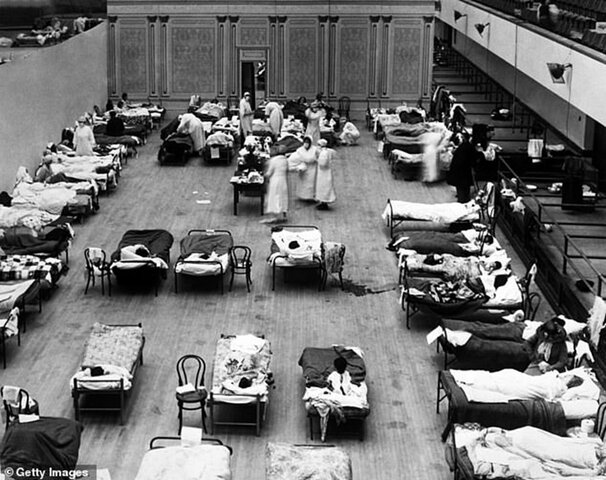 When a 41-year-old San Franciscan named Wong Chut King died of a particularly violent disease in March 1900, there were worries that the pandemic had finally reached U.S. soil from China.
When a 41-year-old San Franciscan named Wong Chut King died of a particularly violent disease in March 1900, there were worries that the pandemic had finally reached U.S. soil from China.
Wong’s death marked the beginning of the United States’ first plague epidemic. But instead of alerting the public, city and state officials—including the governor of California—denied there was any plague outbreak at all. -
 In the Boxer Rebellion of 1900, a Chinese secret organization called the Society of the Righteous and Harmonious Fists led an uprising in northern China against the spread of Western and Japanese influence there. The rebels, referred to by Westerners as Boxers because they performed physical exercises they believed would make them able to withstand bullets, killed foreigners and Chinese Christians and destroyed foreign property. In 1901, China agreed to pay more than $330 million in reparations.
In the Boxer Rebellion of 1900, a Chinese secret organization called the Society of the Righteous and Harmonious Fists led an uprising in northern China against the spread of Western and Japanese influence there. The rebels, referred to by Westerners as Boxers because they performed physical exercises they believed would make them able to withstand bullets, killed foreigners and Chinese Christians and destroyed foreign property. In 1901, China agreed to pay more than $330 million in reparations. -
 In Monza, Italy, King Umberto I is shot to death by Gaetano Bresci, an Italian-born anarchist who resided in America before returning to his homeland to murder the king.
In Monza, Italy, King Umberto I is shot to death by Gaetano Bresci, an Italian-born anarchist who resided in America before returning to his homeland to murder the king.
Crowned in 1878, King Umberto became increasingly authoritarian in the late 19th century. He enacted a program of suppression against the radical elements in Italian society, particularly members of the popular anarchist movements. -
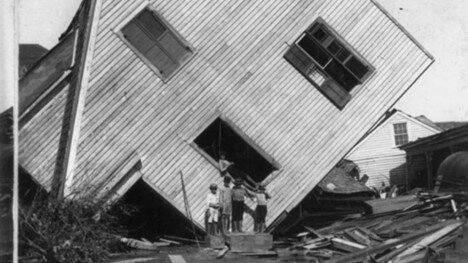 On September 8, 1900, an unnamed hurricane bearing 140-m.p.h winds slammed into the Gulf Coast, generating a 16-foot storm surge that nearly wiped the island and its 37,000 residents off the map. An estimated 6,000 to 8,000 people perished in the storm, the single deadliest in U.S. history.
On September 8, 1900, an unnamed hurricane bearing 140-m.p.h winds slammed into the Gulf Coast, generating a 16-foot storm surge that nearly wiped the island and its 37,000 residents off the map. An estimated 6,000 to 8,000 people perished in the storm, the single deadliest in U.S. history. -
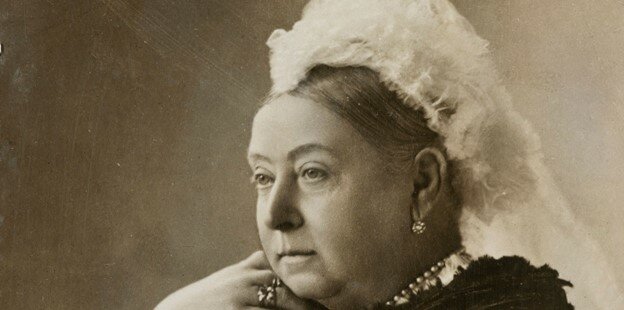 The death of Queen Victoria on January 22, 1901, ends an era in which most of her British subjects know no other monarch. Her 63-year reign saw the growth of an empire on which the sun never set. Victoria restored dignity to the English monarchy and ensured its survival as a ceremonial political institution. It took another 114 years for Queen Elizabeth II to surpass Victoria at 70+ years.
The death of Queen Victoria on January 22, 1901, ends an era in which most of her British subjects know no other monarch. Her 63-year reign saw the growth of an empire on which the sun never set. Victoria restored dignity to the English monarchy and ensured its survival as a ceremonial political institution. It took another 114 years for Queen Elizabeth II to surpass Victoria at 70+ years. -
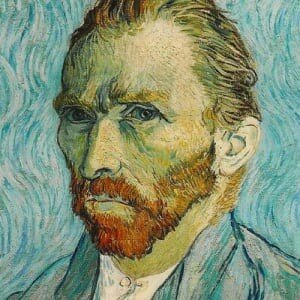 On March 15, 1901, paintings by the late Dutch painter Vincent van Gogh are shown at the Bernheim-Jeune gallery in Paris. The 71 paintings, which captured their subjects in bold brushstrokes and expressive colors, caused a sensation across the art world.
On March 15, 1901, paintings by the late Dutch painter Vincent van Gogh are shown at the Bernheim-Jeune gallery in Paris. The 71 paintings, which captured their subjects in bold brushstrokes and expressive colors, caused a sensation across the art world.
Eleven years before, while living in Auvers-sur-Oise outside Paris, van Gogh had died by suicide without any notion that his work was destined to win acclaim beyond his wildest dreams. In his lifetime, he had sold only one painting. -
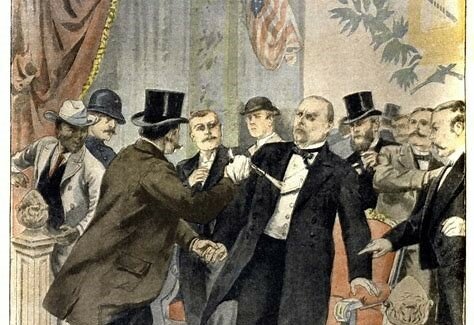 On September 6, 1901, President William McKinley is shaking hands at the Pan-American Exhibition in Buffalo, New York, when a 28-year-old anarchist named Leon Czolgosz approaches him and fires two shots into his chest. The president rose slightly on his toes before collapsing forward, saying “be careful how you tell my wife.
On September 6, 1901, President William McKinley is shaking hands at the Pan-American Exhibition in Buffalo, New York, when a 28-year-old anarchist named Leon Czolgosz approaches him and fires two shots into his chest. The president rose slightly on his toes before collapsing forward, saying “be careful how you tell my wife.
He died 8 days later and was succeeded by Vice President, Theodore Roosevelt.
Leon Czolgosz is depicted in Stephen Sondheim’s musical “Assassins” -
 Italian physicist and radio pioneer Guglielmo Marconi succeeds in sending the first radio transmission across the Atlantic Ocean, disproving detractors who told him that the curvature of the earth would limit transmission to 200 miles or less. The message–simply the Morse-code signal for the letter “s”–traveled more than 2,000 miles from Poldhu in Cornwall, England, to Newfoundland, Canada.
Italian physicist and radio pioneer Guglielmo Marconi succeeds in sending the first radio transmission across the Atlantic Ocean, disproving detractors who told him that the curvature of the earth would limit transmission to 200 miles or less. The message–simply the Morse-code signal for the letter “s”–traveled more than 2,000 miles from Poldhu in Cornwall, England, to Newfoundland, Canada. -
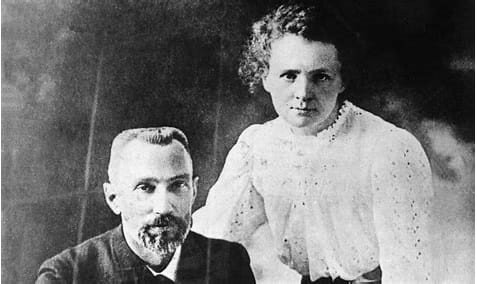 On April 20, 1902, Marie and Pierre Curie successfully isolate radioactive radium salts from the mineral pitchblende in their laboratory in Paris. In 1898, the Curies discovered the existence of the elements radium and polonium in their research of pitchblende. One year after isolating radium, they would share the 1903 Nobel Prize in physics with French scientist A. Henri Becquerel for their groundbreaking investigations of radioactivity.
On April 20, 1902, Marie and Pierre Curie successfully isolate radioactive radium salts from the mineral pitchblende in their laboratory in Paris. In 1898, the Curies discovered the existence of the elements radium and polonium in their research of pitchblende. One year after isolating radium, they would share the 1903 Nobel Prize in physics with French scientist A. Henri Becquerel for their groundbreaking investigations of radioactivity. -
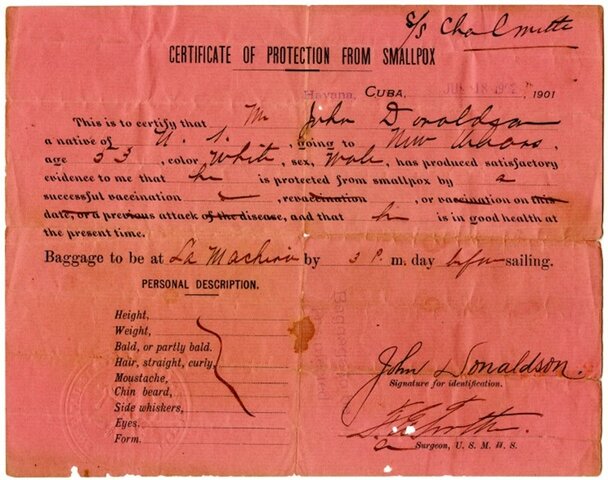 In 1901, the city of Boston registered 1,596 confirmed cases of smallpox, a highly contagious, fever-inducing illness.
In 1901, the city of Boston registered 1,596 confirmed cases of smallpox, a highly contagious, fever-inducing illness.
On July 17, 1902, a criminal complaint was issued against Pastor Henning Jacobson and other anti-vaccine activists who refused to be vaccinated, carrying a $5 fine.
Anti-vaccination groups called compulsory vaccination “the greatest crime of the age,” claiming that it “slaughter[s] tens of thousands of innocent children.” -
 The name teddy bear comes from former United States President Theodore Roosevelt, who was often referred to as "Teddy". Inspired by political cartoon by Clifford Berryman in The Washington Post, Morris Michtom created the teddy bear. He created a tiny soft bear cub and put it in his candy shop window at 404 Tompkins Avenue in Brooklyn with a sign "Teddy's bear." The toys were an immediate success and Michtom founded the Ideal Novelty and Toy Co.
The name teddy bear comes from former United States President Theodore Roosevelt, who was often referred to as "Teddy". Inspired by political cartoon by Clifford Berryman in The Washington Post, Morris Michtom created the teddy bear. He created a tiny soft bear cub and put it in his candy shop window at 404 Tompkins Avenue in Brooklyn with a sign "Teddy's bear." The toys were an immediate success and Michtom founded the Ideal Novelty and Toy Co. -
 After several unsuccessful attempts, on December 17, 1903, at Kill Devil Hills near Kitty Hawk, North Carolina, Orville Wright completed the first powered flight of a heavier-than-air aircraft known as the Wright Flyer. The flight lasted just 12 seconds, traveled 120 feet, and reached a top speed of 6.8 miles per hour. The brothers completed three other flights that day, the longest traveling 852 feet in 59 seconds. The highest altitude reached was about 10 feet.
After several unsuccessful attempts, on December 17, 1903, at Kill Devil Hills near Kitty Hawk, North Carolina, Orville Wright completed the first powered flight of a heavier-than-air aircraft known as the Wright Flyer. The flight lasted just 12 seconds, traveled 120 feet, and reached a top speed of 6.8 miles per hour. The brothers completed three other flights that day, the longest traveling 852 feet in 59 seconds. The highest altitude reached was about 10 feet. -
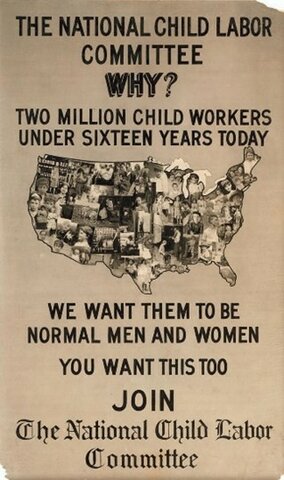 In 1904, the National Child Labor Committee formed in the hopes of ending the horrors of child labor. Teams of investigators were sent to collect evidence of the harsh conditions children were working in.
In 1904, the National Child Labor Committee formed in the hopes of ending the horrors of child labor. Teams of investigators were sent to collect evidence of the harsh conditions children were working in.
The Keating-Owns Act of 1916 set tighter standards on children’s employment. Although initially promising, the restrictions would not last long: just a couple of years later, the act was deemed unconstitutional by the Supreme Court. -
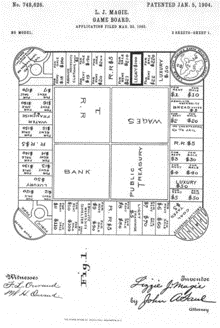 American anti-monopolist Lizzie Magie created a game, which she hoped would explain the single-tax theory of Henry George. It was intended as an educational tool, to illustrate the negative aspects of concentrating land-in private monopolies. She took out a patent in 1904. Her game, The Landlord's Game, was self-published, beginning in 1906. The game was eventually sold to Parker Brothers (now Hasbro), renamed "Monopoly", and has 100's of international iterations.
American anti-monopolist Lizzie Magie created a game, which she hoped would explain the single-tax theory of Henry George. It was intended as an educational tool, to illustrate the negative aspects of concentrating land-in private monopolies. She took out a patent in 1904. Her game, The Landlord's Game, was self-published, beginning in 1906. The game was eventually sold to Parker Brothers (now Hasbro), renamed "Monopoly", and has 100's of international iterations. -
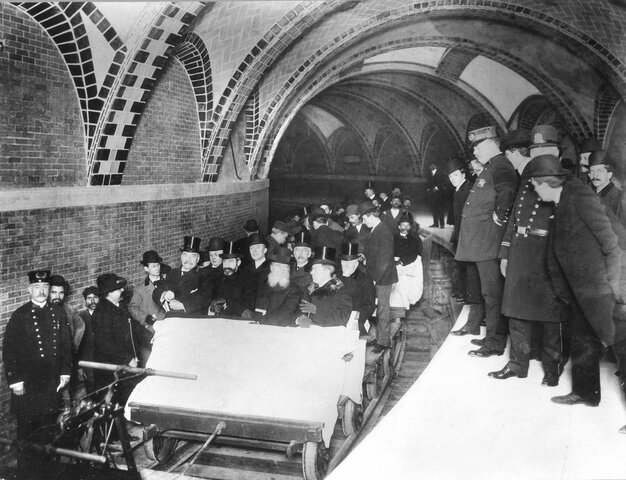 At 2:35 on the afternoon of October 27, 1904, New York City Mayor George McClellan takes the controls on the inaugural run of the city’s innovative new rapid transit system: the subway. At 7 p.m. that evening, the subway opened to the general public, and more than 100,000 people paid a nickel each to take their first ride under Manhattan.
At 2:35 on the afternoon of October 27, 1904, New York City Mayor George McClellan takes the controls on the inaugural run of the city’s innovative new rapid transit system: the subway. At 7 p.m. that evening, the subway opened to the general public, and more than 100,000 people paid a nickel each to take their first ride under Manhattan. -
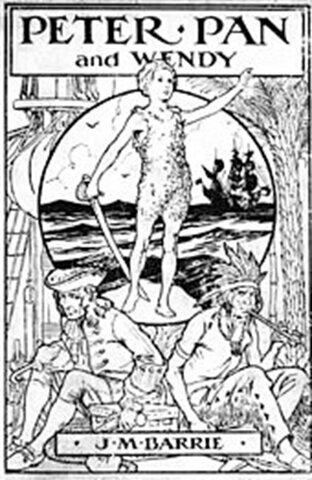 In 1904, James Barrie wrote Peter Pan. Although he wrote many other plays, few are still performed today, and none had the staying power of Peter Pan.
In 1904, James Barrie wrote Peter Pan. Although he wrote many other plays, few are still performed today, and none had the staying power of Peter Pan. -
 In his 1905 book, Edward Gordon Craig outlined his concept of a “total theatre” in which the stage director alone would be responsible for harmonizing every aspect of the production—acting, music, colour, movement, design, makeup, and lighting—so that it might achieve its most unified effect. More controversial were Craig’s ideas on the depersonalization of the actor into what he called the “super-marionette” in which the actor's ego was subordinate to the aesthetic concept.
In his 1905 book, Edward Gordon Craig outlined his concept of a “total theatre” in which the stage director alone would be responsible for harmonizing every aspect of the production—acting, music, colour, movement, design, makeup, and lighting—so that it might achieve its most unified effect. More controversial were Craig’s ideas on the depersonalization of the actor into what he called the “super-marionette” in which the actor's ego was subordinate to the aesthetic concept. -
 On June 19, 1905, some 450 people attend the opening day of the world’s first nickelodeon, located in Pittsburgh, Pennsylvania. The storefront theater boasted 96 seats and charged each patron five cents. Their usual offerings included live vaudeville acts as well as short films. By 1907, some 2 million Americans had visited a nickelodeon, and they remained the main outlet for films until they were replaced around 1910 by large modern theaters.
On June 19, 1905, some 450 people attend the opening day of the world’s first nickelodeon, located in Pittsburgh, Pennsylvania. The storefront theater boasted 96 seats and charged each patron five cents. Their usual offerings included live vaudeville acts as well as short films. By 1907, some 2 million Americans had visited a nickelodeon, and they remained the main outlet for films until they were replaced around 1910 by large modern theaters. -
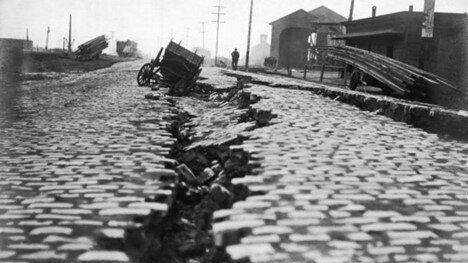 The night before the 1906 earthquake, renowned Italian tenor Enrico Caruso performed in San Francisco. The world-famous opera singer escaped the city’s Palace Hotel, where he was staying at the time of the quake; however, the hotel itself was destroyed later that day by fire.
The night before the 1906 earthquake, renowned Italian tenor Enrico Caruso performed in San Francisco. The world-famous opera singer escaped the city’s Palace Hotel, where he was staying at the time of the quake; however, the hotel itself was destroyed later that day by fire.
The earthquake and subsequent fires devastated San Francisco, California, leaving more than 3,000 people dead and destroying more than 28,000 buildings. -
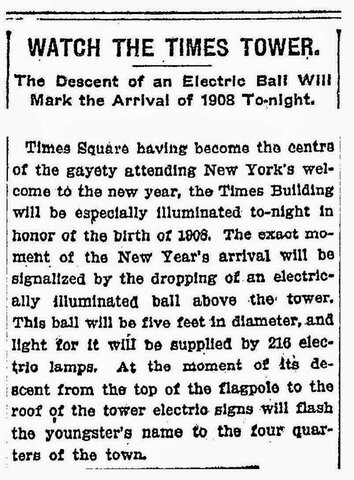 The New York Times publisher Adolf S. Ochs decided to put his own spin on the city’s beloved “time ball” to usher in 1908. As people poured out of theaters, restaurants and streetcars into Times Square on December 31, 1907, they gazed up to the top of the Times Tower and saw a dazzling orb made of wood and iron, illuminated with 100 electric light bulbs. .
The New York Times publisher Adolf S. Ochs decided to put his own spin on the city’s beloved “time ball” to usher in 1908. As people poured out of theaters, restaurants and streetcars into Times Square on December 31, 1907, they gazed up to the top of the Times Tower and saw a dazzling orb made of wood and iron, illuminated with 100 electric light bulbs. . -
 Controversial Call Gives Cubs the Pennant
Controversial Call Gives Cubs the Pennant
On September 23, 1908, a game between the New York Giants and Chicago Cubs ends in 1-1 tie after a controversial call at second base. The officials ruled that Giants first baseman Fred Merkle was out because he failed to touch second base, a call that has been disputed ever since. The Cubs went on to win the World Series but didn't win again until 2016, 108 years later. -
 On February 12, 1909, the 100th anniversary of Abraham Lincoln's birth, a group that included African American leaders such as W.E.B. Du Bois and Ida B. Wells-Barnett announced the formation of a new organization. Called the National Association for the Advancement of Colored People, it would have a profound effect on the struggle for civil rights and the course of 20th-century American history.
On February 12, 1909, the 100th anniversary of Abraham Lincoln's birth, a group that included African American leaders such as W.E.B. Du Bois and Ida B. Wells-Barnett announced the formation of a new organization. Called the National Association for the Advancement of Colored People, it would have a profound effect on the struggle for civil rights and the course of 20th-century American history. -
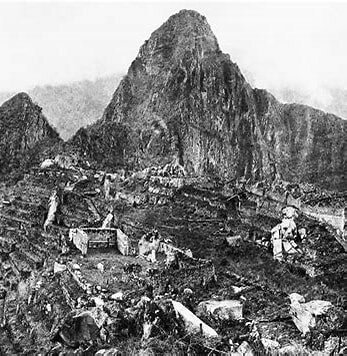 On July 24, 1911, American archeologist Hiram Bingham gets his first look at the ruins of Machu Picchu, an ancient Inca settlement in Peru that is now one of the world’s top tourist destinations. Machu Picchu is believed to have been a summer retreat for Inca leaders, whose civilization was virtually wiped out by Spanish invaders in the 16th century.
On July 24, 1911, American archeologist Hiram Bingham gets his first look at the ruins of Machu Picchu, an ancient Inca settlement in Peru that is now one of the world’s top tourist destinations. Machu Picchu is believed to have been a summer retreat for Inca leaders, whose civilization was virtually wiped out by Spanish invaders in the 16th century. -
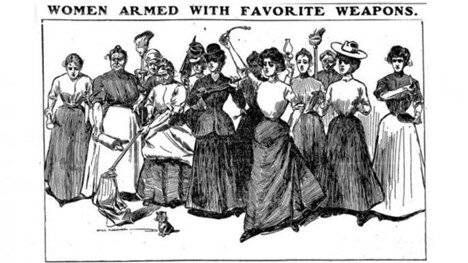 Elizabeth Foley, bearing the entire payroll for her company, fends off robber with her hat pin.
Elizabeth Foley, bearing the entire payroll for her company, fends off robber with her hat pin.
“Quick wit, feminine courage, and a hatpin put to flight a bold, daylight highwayman at Bleecker Street and Broadway,” the New York Times reported.
Foley was just one participant in a movement of women, armed against their male attackers with a popular fashion accessory of the time: hat pins.
In addition to robbers, hat pins were useful in fending off lecherous men known as “mashers”. -
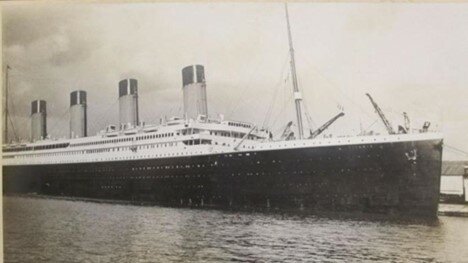 The RMS Titanic, a luxury steamship, sank in the early hours of April 15, 1912, off the coast of Newfoundland in the North Atlantic after sideswiping an iceberg during its maiden voyage. Of the 2,240 passengers and crew on board, more than 1,500 lost their lives in the disaster. Titanic has inspired countless books, articles and films, and the ships story has entered the public consciousness as a cautionary tale about the perils of human hubris.
The RMS Titanic, a luxury steamship, sank in the early hours of April 15, 1912, off the coast of Newfoundland in the North Atlantic after sideswiping an iceberg during its maiden voyage. Of the 2,240 passengers and crew on board, more than 1,500 lost their lives in the disaster. Titanic has inspired countless books, articles and films, and the ships story has entered the public consciousness as a cautionary tale about the perils of human hubris. -
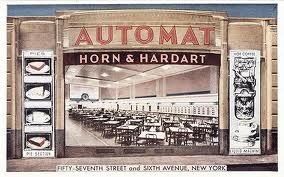 “New Method of Lunching,” proclaimed The New York Times. “Try It! You’ll Like It!!” the ad promised.
“New Method of Lunching,” proclaimed The New York Times. “Try It! You’ll Like It!!” the ad promised.
Curious—and hungry—readers who followed the culinary entreaties and stepped inside the Horn & Hardart Company’s “Automat Lunch Room” in Times Square for its grand opening a century ago found a high-tech, self-service wonder. After window shopping, customers could drop a nickel into a coin slot, turn a knob, lift up the door and help themselves to their food. -
 The 1913 Armory Show, also known as the International Exhibition of Modern Art, was a show organized by the Association of American Painters and Sculptors in 1913. It was the first large exhibition of modern art in America
The 1913 Armory Show, also known as the International Exhibition of Modern Art, was a show organized by the Association of American Painters and Sculptors in 1913. It was the first large exhibition of modern art in America
The show became an important event in the history of American art, introducing Americans, who were accustomed to realistic art, to the experimental styles of the European avant garde, including Fauvism and Cubism. -
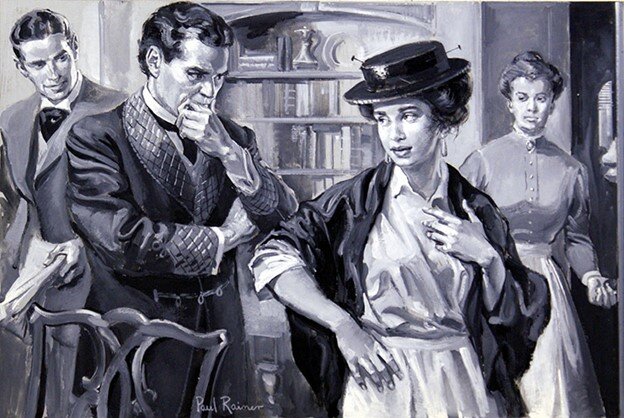 Pygmalion is a play by Irish playwright George Bernard Shaw. It premiered at the Hofburg Theatre in Vienna on 16 October 1913. Shaw's play was adapted most notably for the 1956 musical My Fair Lady and its 1964 film version.
Pygmalion is a play by Irish playwright George Bernard Shaw. It premiered at the Hofburg Theatre in Vienna on 16 October 1913. Shaw's play was adapted most notably for the 1956 musical My Fair Lady and its 1964 film version. -
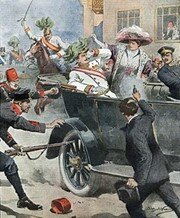 The spark that ignited World War I was struck in Sarajevo, Bosnia, where Archduke Franz Ferdinand—heir to the Austro-Hungarian Empire—was shot to death along with his wife, Sophie, by the Serbian nationalist Gavrilo Princip on June 28, 1914. Princip and other nationalists were struggling to end Austro-Hungarian rule over Bosnia and Herzegovina.
The spark that ignited World War I was struck in Sarajevo, Bosnia, where Archduke Franz Ferdinand—heir to the Austro-Hungarian Empire—was shot to death along with his wife, Sophie, by the Serbian nationalist Gavrilo Princip on June 28, 1914. Princip and other nationalists were struggling to end Austro-Hungarian rule over Bosnia and Herzegovina.
Thanks to new military technologies and the horrors of trench warfare, World War I saw unprecedented levels of carnage and destruction. -
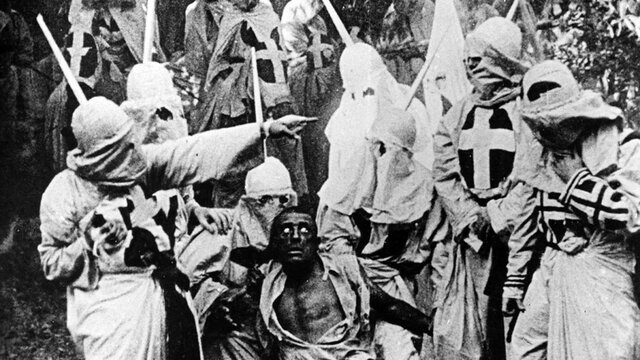 In just over three hours, D.W. Griffith’s controversial epic film about the Civil War and Reconstruction depicted the Ku Klux Klan as valiant saviors of a post-war South ravaged by Northern carpetbaggers and immoral freed Black people. The film was an instant blockbuster. And with innovative cinematography and a Confederate-skewed point of view, The Birth of a Nation also helped rekindle the KKK.
In just over three hours, D.W. Griffith’s controversial epic film about the Civil War and Reconstruction depicted the Ku Klux Klan as valiant saviors of a post-war South ravaged by Northern carpetbaggers and immoral freed Black people. The film was an instant blockbuster. And with innovative cinematography and a Confederate-skewed point of view, The Birth of a Nation also helped rekindle the KKK.
The NAACP protested but the film’s popularity was too strong. -
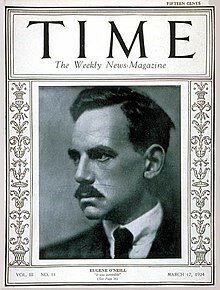 Eugene O'Neill (1888–1953), who would become one of America's most famous playwrights, had his first play performed by the Provincetown Players in New York City in 1916.
Eugene O'Neill (1888–1953), who would become one of America's most famous playwrights, had his first play performed by the Provincetown Players in New York City in 1916. -
 It was an exceptionally deadly global influenza pandemic caused by the H1N1 influenza A virus. The earliest documented case was March 1918 in Kansas, United States, with further cases recorded in France, Germany and the United Kingdom in April. Two years later, nearly a third of the global population, or an estimated 500 million people, had been infected in four successive waves. Estimates of deaths range from 17 million as high as 100 million, making it one of the deadliest pandemics in history
It was an exceptionally deadly global influenza pandemic caused by the H1N1 influenza A virus. The earliest documented case was March 1918 in Kansas, United States, with further cases recorded in France, Germany and the United Kingdom in April. Two years later, nearly a third of the global population, or an estimated 500 million people, had been infected in four successive waves. Estimates of deaths range from 17 million as high as 100 million, making it one of the deadliest pandemics in history -
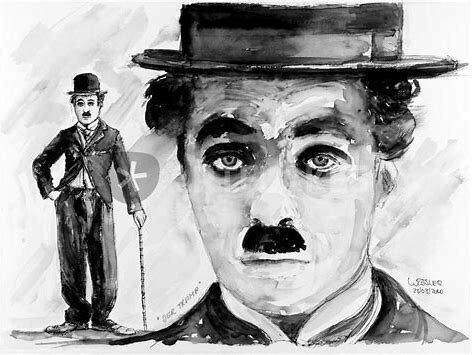 Charlie Chaplin joined forces with Douglas Fairbanks, Mary Pickford, and D. W. Griffith to form a new distribution company, United Artists, in January 1919.The arrangement was revolutionary in the film industry, as it enabled the four partners – all creative artists – to personally fund their pictures and have complete control.
Charlie Chaplin joined forces with Douglas Fairbanks, Mary Pickford, and D. W. Griffith to form a new distribution company, United Artists, in January 1919.The arrangement was revolutionary in the film industry, as it enabled the four partners – all creative artists – to personally fund their pictures and have complete control. -
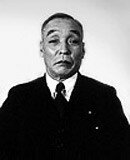 On January 30, 1920, Jujiro Matsuda (1875-1952) forms Toyo Cork Kogyo, a business that makes cork, in Hiroshima, Japan; just over a decade later the company produces its first automobile and eventually changes its name to Mazda. Today, Mazda is known for its affordable, quality-performance vehicles.
On January 30, 1920, Jujiro Matsuda (1875-1952) forms Toyo Cork Kogyo, a business that makes cork, in Hiroshima, Japan; just over a decade later the company produces its first automobile and eventually changes its name to Mazda. Today, Mazda is known for its affordable, quality-performance vehicles. -
 Britannica, Google Images, History.com, New York Times, Washington Post, New York Post, NASA, Wikipedia
Britannica, Google Images, History.com, New York Times, Washington Post, New York Post, NASA, Wikipedia